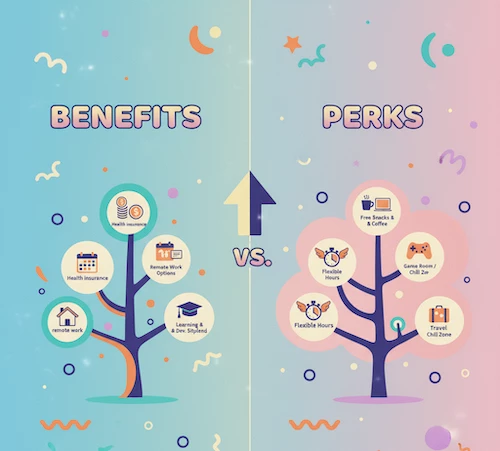Benefits & Perks, Explained
Benefits can be half your total compensation. Here's how to read them and compare offers like a pro.

Premiums, deductibles, copays, in-network coverage, and start date (e.g., day 1 vs. after 30 days).
Therapy sessions, counseling, crisis support, app access.
Employer match %, vesting schedule, investment options.
PTO bank vs. separate vacation/sick, holidays, carryover rules.
Paid weeks, eligibility period, caregiver leave.
Short/long-term disability % of pay covered; basic life amount.
Laptop, accessories, home-office stipend, coworking pass.
Annual stipend, certification budget, internal courses.
Transit/parking benefits, bike storage, relocation help.
Snacks, meals, gym discounts, wellness reimbursements.
Flexible hours, summer Fridays, volunteer days.


RSUs = shares granted; options = right to buy later at a set price.
How/when equity becomes yours (e.g., 4 years, 1-year cliff).
Can you sell? Public vs. private company matters.
Annual salary or hourly rate.
Target %, payout history.
Value today vs. potential.
Health, retirement match, PTO.
Any that matter to you personally.
Remote/hybrid/in-person expectations.
Mentorship, L&D budget, promotion path.
